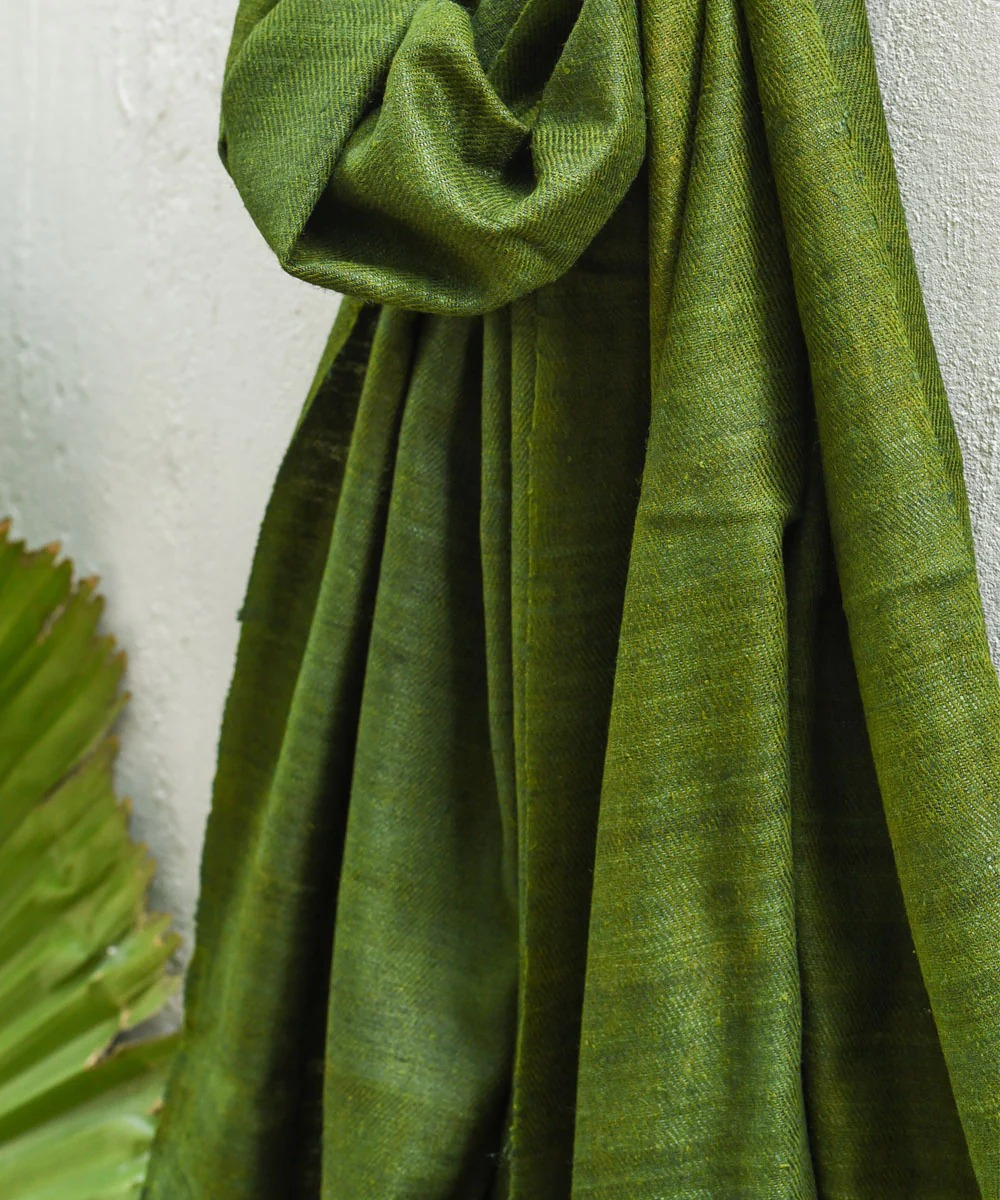
Introduction:
The combination of indigo and onion skin dyes offers an intriguing and versatile approach to natural dyeing. While indigo alone produces a deep, rich blue, combining it with the warm, golden tones of onion skin creates unique shades of olive green. This blend reflects the harmonious use of two natural resources—indigo and onion skins—commonly found in Assam, Manipur, and Nagaland. In these states, artisans have developed innovative dyeing techniques that marry these two colors to create intricate and layered shades, enhancing the visual appeal and cultural significance of their textiles.
Description:
Creating olive green using a combination of indigo and onion skin dyes requires a deep understanding of both dyeing processes. The process typically begins with dyeing the fabric in an onion skin bath, which imparts a golden yellow or brownish hue, depending on the concentration of the dye and the fabric being used. Onion skin dye contains a high level of tannins, which naturally bind well to fibers, making it an ideal base for the dual-dye process. Once the fabric is sufficiently dyed with onion skin, it is then dipped into an indigo vat.
Indigo, when used as a second layer over onion skin dye, reacts with the initial golden tones to produce a range of olive green shades. The depth and richness of the olive green depend on the number of dips in the indigo vat and the strength of the onion skin dye. The more times the fabric is dipped in indigo, the darker and deeper the green becomes. This blending of dyes creates a unique, earthy hue that is not achievable with synthetic dyes, adding to the fabric’s exclusivity and appeal.
Artisans in Assam, Manipur, and Nagaland use this combination of dyes in their handloom products to create textiles with a natural, earthy charm. The olive green produced by the indigo-onion skin blend is often seen in traditional shawls, scarves, and garments. These fabrics are highly prized for their unique color, which symbolizes the lush landscapes and forests of the North-Eastern region. Olive green textiles are particularly popular among consumers looking for eco-friendly and culturally significant products, as this shade is both timeless and deeply connected to the region’s heritage.
The process of creating olive green through this combination requires careful attention to timing and pH levels. Indigo dye is highly sensitive to oxygen and must be handled in an environment with limited exposure to air during the dyeing process. Meanwhile, onion skin dye requires a specific pH level to extract the correct tones. Artisans must balance both processes carefully to ensure the colors blend seamlessly and the final hue is uniform. This technique demonstrates the high level of craftsmanship and skill required in natural dyeing.
Furthermore, the use of natural mordants such as alum or iron can alter the final olive green shade, allowing artisans to produce different variations of the color. For example, using alum as a mordant may result in a lighter, more yellowish green, while iron mordants create deeper, more subdued tones. This versatility allows artisans to experiment with color and create textiles that are both traditional and contemporary.
The combination of indigo and onion skin dyes is also environmentally sustainable. Both dyes are derived from natural, renewable resources, and the dyeing process itself is free from harmful chemicals. This makes the technique particularly appealing to artisans and consumers who prioritize eco-conscious production methods. Additionally, the use of onion skins—often considered waste—contributes to a zero-waste ethos, turning a discarded material into a valuable resource for textile dyeing.
Overall, the blending of indigo and onion skin dyes to create olive green is a testament to the creativity and expertise of North-Eastern artisans. This technique highlights the region’s deep connection to the natural world and its commitment to sustainable craftsmanship. As interest in natural dyes continues to grow, the indigo-onion skin combination stands out as a beautiful and environmentally friendly option for those seeking unique, handcrafted textiles.